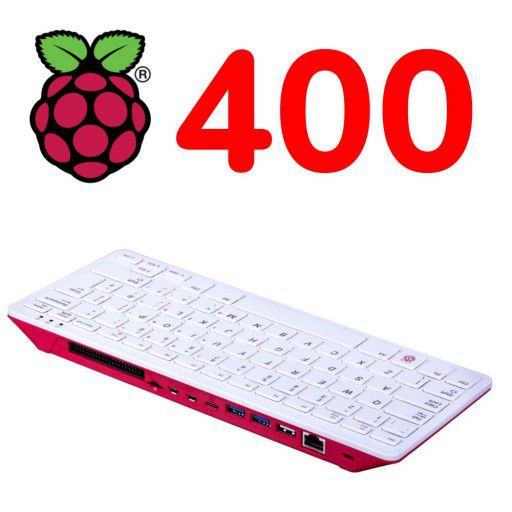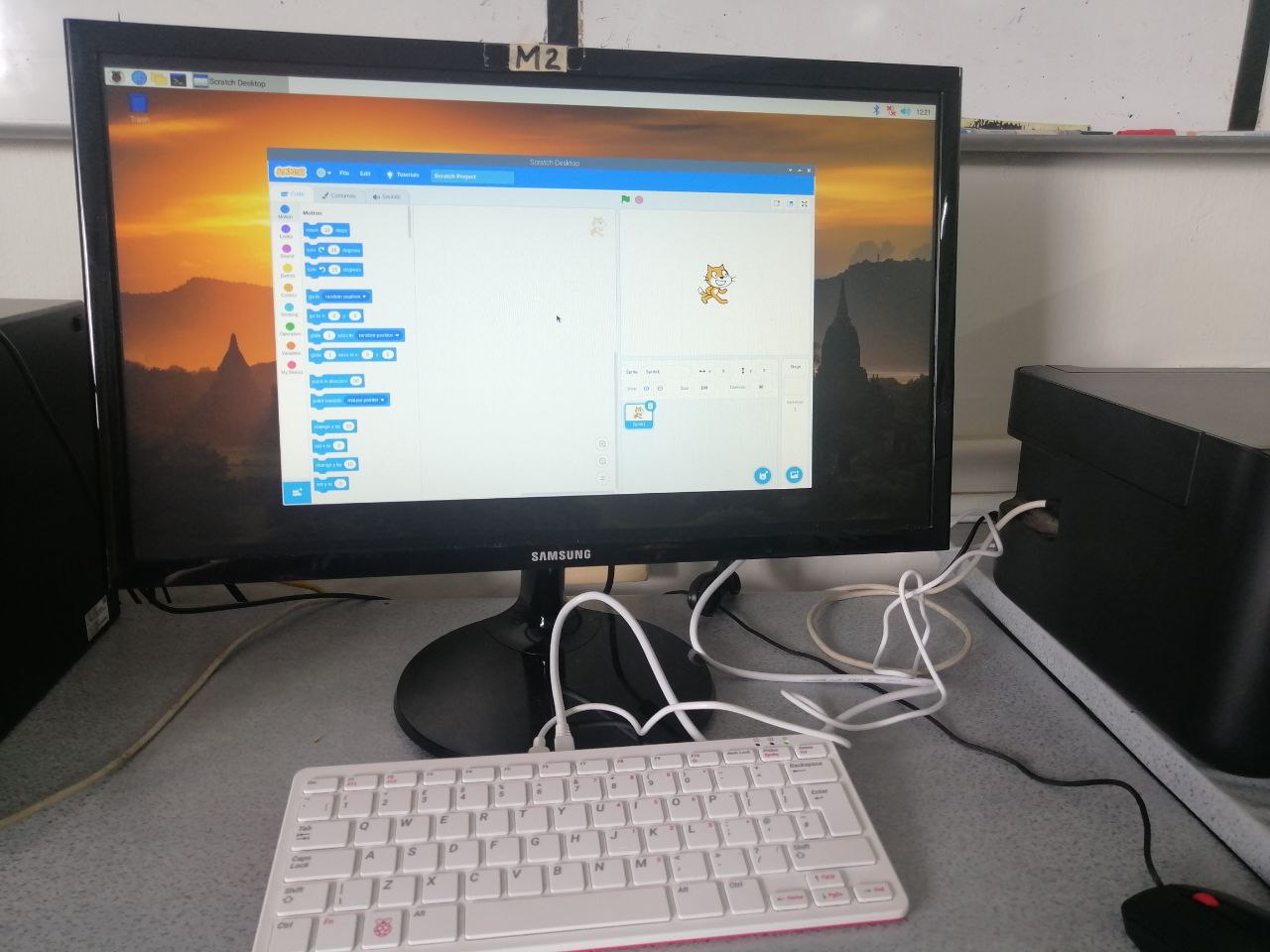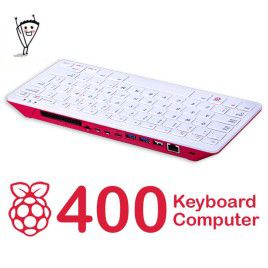Your shopping cart is empty!
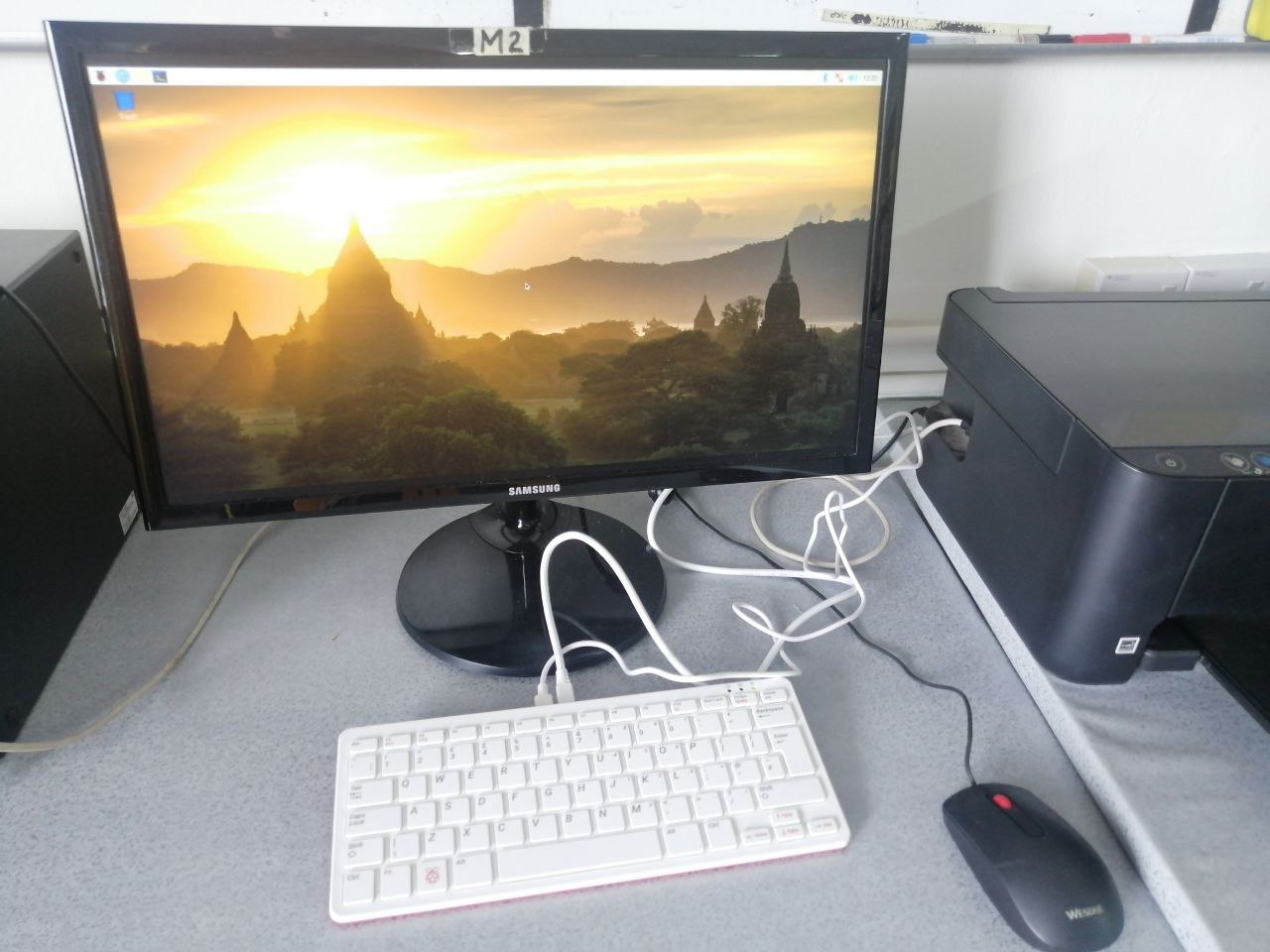
Exploring Raspberry Pi 400 as Computer Substitute at Primary Schools: The Keyboard is the Computer
Author: Cikgu Goh Kok Ming
INTRODUCTION
In the age of industrial revolution 4.0, the internet of things (IoT), and technology-based teaching and learning processes, mastery of digital skills is becoming more and more crucial. In line with that, the implementation of the Digital Education Policy with three main objectives which include creating a digitally-fluent generation capable of mastering digital literacy and skills as well as producing innovations using digital technology will be mainly focused. One of the ways is to assure connectivity and infrastructure in schools. This paper proposes a low-cost open-source solution to improve the access to information technology and communication (ICT) through computers in school. However, the proposed alternative was set out to use the Raspberry Pi 400 as a substitute for a standard computer. The pilot project was implemented at a primary school located in Perak. There were threefold questions to be answered:
- How does Raspberry Pi 400 fit into the teaching and learning process?
- What perception of students towards Raspberry Pi 400
- Why Raspberry Pi 400 was chosen?
RELATED WORKS
Raspberry Pi 400 was introduced by the Raspberry Pi Foundation, which referred to it as "a complete personal computer, integrated into a tiny keyboard." This is a bold claim coming from a business that has been selling project-based single-board computers since the launch of the Raspberry Pi in 2012 (Cross, 2021). It is a compact computer that has a number of important uses and benefits (refer to Figure 1)
Figure 1. Raspberry Pi 400
Source: Cytron Technologies
In this single-board computer, several programs for system administration, productivity, programming, and gaming are already installed when it is purchased. LibreOffice, Scratch, Python, and Minecraft are just a few examples that give a decent idea of the possibilities of the Raspberry Pi 400. Stay Connected with School is a program that Raspberry Pi recently introduced. In collaboration with nonprofit organizations, it gave families not just a Raspberry Pi 4, but also all the hardware and software they needed to access an online learning environment and phone support anytime they wanted it. However, that was limited to 1,000 households. Now, it is hoped that the Raspberry Pi 400 will serve as the foundation for a larger endeavor.
The Raspberry Pi nano computer has been found to be a good solution for making computer labs with a cheap cost and effective method in Ecuador (Alfredo, Angelo, Lidice, Viviana, Roberto, & Silvia, 2018). The device requires a heat sink and a fan, according to the results of the stress tests, however, once these extra components are in place, the performance of the computer is unaffected. Additionally, the activities with the students revealed that students have a keen interest in programming activities and that adapting to new technology and educational approaches is not a challenge for them. It is strongly advised that this pilot program be expanded upon, starting with a single school and then on to entire areas. The endeavor to provide access to high-end computers for students from low-income communities also includes a primary school coding program.
In line with that, it is interesting for more Raspberry Pi 400 research or project in classrooms in different contexts. There are some ways in which the Raspberry Pi 400 can be used for different purposes, for example:
- Raspberry Pi 400 is a fully functional computer that can be used for tasks such as browsing the web, checking email, and working on documents
- Raspberry Pi 400 comes with a range of programming languages pre-installed, making it an ideal platform for learning to code and building projects
- Raspberry Pi 400's compact size and low power consumption make it an excellent choice for DIY projects and home automation
- Raspberry Pi 400 is a great tool for teaching computer science and programming concepts and is used in schools and universities around the world, and is a versatile platform for developing and testing new ideas and prototypes.
OUR PILOT PROJECT
The pilot project was implemented in a primary school in Perak. The school supported us with access to the computer lab, which included five standard computers running the Windows 10 operating system. Two Raspberry Pi 400 computers were used for the project, each equipped with a display, mouse, keyboard, speakers, and an Internet connection. In this project, there were two activities implemented to answer the questions stated in this paper.
How does Raspberry Pi 400 fit into the teaching and learning process?
Students were given the opportunity to familiarise themselves with the equipment as part of the first activity, which allowed them to interact in accordance with their knowledge and curiosities [7]. Surprisingly, students quickly adapted their prior understanding to the desktop's alternatives. The second activity was teaching the students a quick programming exercise using the free software Scratch. Scratch is a visual programming language that is well-suited for beginners and can be used to build interactive programs and games. Additionally, it is pre-installed on the Raspberry Pi 400, so educators will just need to launch it from the main menu. In the second activity, a few more steps were carried out in the classroom as below:
- Introduce the Scratch interface: Show students the different parts of the Scratch interface, including the stage, blocks palette, and script area.
- Demonstrate basic blocks: Show students how to use blocks such as "move 10 steps" and "say hello" to create simple programs.
- Encourage experimentation: Encourage students to experiment with different blocks and see what they can create.
- Introduce more advanced concepts: As students become more comfortable with Scratch, you can introduce more advanced concepts such as variables, loops, and conditionals.
- Encourage students to build their own projects: Encourage students to use their creativity and imagination to build their own programs and games using Scratch.
This was meant to expose the students to an entirely new experience. Students can acquire the fundamental logic ideas needed to improve their coding skills by using this animated and kid-designed learning platform that is in line with national curriculum needs. After the activities were carried out, the student's responses were overwhelmingly positive. A child's natural curiosity allows them to adapt to new learning styles. The coding exercise was a significant experiment to see how students who had no prior experience with programming activities would respond to an important skill that has been categorized as one of the most crucial for the future (ITU, 2020).
What perception of students towards Raspberry Pi 400?
Students’ perception of Raspberry Pi 400 is very important as the first step of integrating Pi 400 into classrooms. If the perception is positive, students will be more motivated toward technology. In order to know students’ perceptions, simple interviews were carried out. An analysis was applied to identify the keywords (refer to figure 2) based on their occurrences. The word cloud revealed that students found this alternative approach of using Raspberry Pi 400 was fun, easy, interactive, and fast. These keywords can be categorized as the perceived enjoyment of technology acceptance among students (Davies, 1989) and this perceived enjoyment played an important drive to sustain students’ motivation in the future.
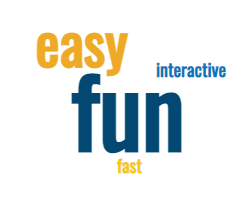
Figure 2. Word cloud based on occurrences of keywords
Why Raspberry Pi 400 was chosen?
The Raspberry Pi 400 is frequently contrasted with conventional computers. However, there are a few key reasons to use a Raspberry Pi 400 over a regular computer:
- Cost: The Raspberry Pi 400 is significantly less expensive than most traditional computers, making it an affordable option for those on a budget.
- Size: The Raspberry Pi 400 is a compact device, making it more portable and easier to store than a traditional desktop computer.
- Low power consumption: The Raspberry Pi 400 uses very little power, making it an energy-efficient choice for those looking to reduce their carbon footprint.
- Customization: The Raspberry Pi 400 is a customizable platform that allows users to modify and configure the hardware and software to suit their needs.
- Education: The Raspberry Pi 400 is often used in educational settings to teach computer science and programming concepts, due to its low cost and versatility.
Furthermore, across all skill levels (basic, intermediate, and advanced abilities), there was a digital skills gap and a significant demand for people with these skills. However, the pandemic has made the gap in digital skills much highlighted and the importance of digital skills has been stressed by International Telecommunication Union (ITU) in Digital Skills Insights 2020. Thus, Raspberry Pi 400 could be one of the great tools for helping students develop their digital skills in certain contexts and limitations. There are ways in which the Raspberry Pi 400 can be used to enhance students' digital literacy and skills including:
- Programming and coding: The Raspberry Pi 400 comes with a range of programming languages pre-installed, making it an ideal platform for learning to code and building projects.
- Computer science education: The Raspberry Pi 400 can be used to teach students about computer hardware, operating systems, and other computer science concepts.
- Problem-solving and critical thinking: Using the Raspberry Pi 400 to build and troubleshoot projects can help students develop important problem-solving and critical thinking skills.
- Creativity and innovation: The Raspberry Pi 400's versatility and customization options allow students to use their creativity and imagination to build and design their own projects. Therefore, why not give it a shot?
CONCLUSION
Think about the age-old debate over whether the chicken or the egg came first. Even if a seemingly straightforward subject can elicit extensive thought and in-depth research, it is not always amenable to a simple or obvious solution. One could argue that the existence of the chicken is necessary for the conception of the egg, but where did the chicken come from in the first place? What a conundrum. In academics, there is another subject that sparks much discussion, but it may not be as perplexing or thought-provoking. In other words, which contributes more to learning—the message or the medium? The answer may depend on whether the philosopher is an objectivist or constructionist in their approach to teaching and learning. Nevertheless, regardless of one's personal beliefs, it is improbable that she will be able to persuade someone who holds a different opinion from hers of the wisdom of her own viewpoint. The other argument might have some actual merit, albeit, if pressed, each side might reluctantly concede as much. But the heated argument goes on. Therefore, why not give it a shot to build our living theories of using Raspberry Pi 400 in classrooms?
References:
- Cross, S. (2021). Is The Raspberry Pi 400 Really A ‘Complete’ Personal Computer? Retrieved from https://medium.com/linuxforeveryone/is-the-raspberry-pi-400-really-a-complete-pc-3754839ca347.
- Davis, F. D. “Perceived Usefulness, Perceived Ease of Use, and User Acceptance of Information Technology,” MIS Quarterly (13:3), 1989, pp. 319‐339
- Raspberry Pi Foundation. (n.d.). Stay Connected with Schools. Retrieved from https://www.raspberrypi.org/stay-connected/
- International Telecommunication Union (ITU). (2020). Digital Skills Insights. Geneva, Switzerland.
Hardware Components
Raspberry Pi 400 Keyboard Computer-US Layout
$77.00 $77.00
 International
International Singapore
Singapore Malaysia
Malaysia Thailand
Thailand Vietnam
Vietnam
